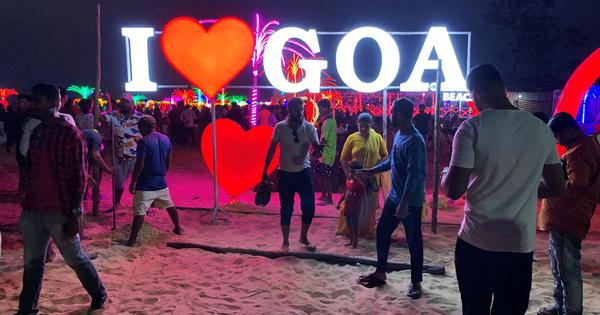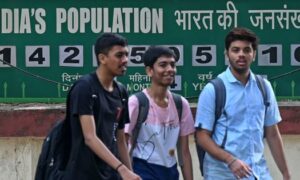
This morning I woke up to a crowdfunding appeal by a filmmaker who said they were not from Goa but had settled in Aldona. The central question of their short film stemmed from their own life: they felt like an outsider in Goa. They said they struggled to belong, that there were small, daily reminders that they did not fit in.
To be honest, I found this mildly enraging. This performance of displacement, this idea of being a sensitive outsider who wants to “belong,” has become a tired trope among the new elites who have settled in Goa, especially in Bardez villages like Aldona, Siolim, Moira, or Assagao. Also, at this point, “Aldona Filmmakers” is a caricatured trope in the zeitgeist of Goan popular culture. They repeat the same story. They came here seeking home, but Goa refuses to accept them.
But why is belonging so important? Why does one need to belong somewhere at all?
I say this as someone who has lived outside Goa since 2011, in Pune, Delhi, America, and Europe. I have lived long enough in each place to know what it means to be away. Yet never once did I feel the need to belong. I knew I was there for a reason, that my time was finite, and that life in every place has its own local rhythm you either accept or you do not. I never thought that my life’s meaning depended on being accepted by Philadelphia, or Pune or Lisbon.
So why is this urge to belong such an obsession for the new settlers in Goa? These are people who have come here with comfort, capital, and options. They have gentrified small villages to a point where even Goans now feel they do not belong. If you travel through Bardez today, you can see how much has changed. The scale of real estate development is unimaginable. Moreover, these homes are neither built for the local Goans nor can they afford them.
Goan economy was built on mining and tourism. Mining has been shut for over a decade now, and tourism has merged into real estate. Villas and old Goan houses are being bought at high prices by non-Goans and then listed on Airbnb. Much of this property stands empty most of the year. Rents have become unaffordable even for the middle class, let alone for working Goans.
A luxurious Beachside Villa in Goa for an Ultimate Experience pic.twitter.com/QrVLc6n1Mw
— Goa Villas (@Goavilla_) October 31, 2025
What frustrates me most is how little these settlers want to engage with this reality. They come with savings from big-city salaries from Pune, Bombay, Bangalore, or Delhi, where Rs 20 lakh-Rs 30 lakh packages are normal. They bring that economy into a place that was never built on those earnings. And then they make films and host fundraisers about how they “do not feel welcome.”
One such recent film, also shot in Aldona, was called Aiz Mhaka Falea Tuka. It was technically well-made and probably travelled to film festivals, but it represented Goa through the familiar outsider’s gaze: quaint, picturesque, and strangely empty. In their imagination, Goa’s beauty exists best when its people are absent. The villages are scenic, the houses are beautiful, but they are stripped of their inhabitants, their struggles, their living texture.
When you actually go to these villages, the contrast is stark. In Siolim, where I once stayed for a few days, 70% of the apartment complex I lived in was empty, all Airbnb flats. Outside, local residents were protesting because they did not have a continuous water supply. The same buildings that stood empty had their own swimming pools.
These are the contradictions the newcomers do not want to see. They attend community gatherings filled only with others like themselves, from the same class, the same schools, and the same networks. There is almost no attempt to engage with local life, politics, or crises. And Goa is full of crises right now: environmental degradation, land grabs, water scarcity, and an increasingly lawless real-estate economy.
If these settlers truly wanted to belong, they would also take responsibility. They would speak up for Goa, use their skills, networks, and privileges to protect the place they claim to love. But that rarely happens. Instead, the burden of defending Goa still falls on Goans, who preserved this landscape and way of life often at the cost of their own ambitions.
Bollywood fantasy
I think an entire generation, probably the one born just before mine, was deceived by a certain image of Goa created by the film Dil Chahta Hai in 2001. I was born at the cusp of India’s economic liberalization, but that generation, five or six years older, grew up with the cultural aftershocks of that moment. The film came as a kind of escape from the conservatism that had defined the 1990s. In the 1990s, Indian cinema was obsessed with preserving the family structure.
Films like Hum Aapke Hain Koun or Taal defended the joint family, patriarchal order, and caste endogamy against what they saw as Western corruption. The narrative resolution was always about returning home and safeguarding tradition.
Then came Dil Chahta Hai. It broke away from the family and celebrated friendship, individualism, and freedom. And where did these rich, confused, urban Indians go to find themselves? They drove to Goa.
The film’s title song captures that spirit perfectly: Ye Khushi Rahe, Roshni Rahe Apne Vaaste. Goa became the landscape of self-discovery, joy, and liberation. To these characters, Goa looked like a small piece of Europe – modern, coastal, cosmopolitan, yet within driving distance of Bombay.
That film changed everything. Suddenly Goa was not just a place; it was a metaphor for freedom. It became the default setting for friendship, for escape, for rediscovery. Every friend group wanted to go on a “Goa trip,” and that trip became a middle-class aspiration.
Since then, every film that features Goa has added another layer of consumption. Dil Chahta Hai gave us the fort in Chapora, now called the “Dil Chahta Hai Fort,” where tourists recreate the famous three-friends pose. Dear Zindagi gave us the Parra Road selfie spot, now clogged with cars and influencers. There was Finding Fanny, and even smaller films like Tu Hai Mera Sunday that reinforced the same image: Goa as a lifestyle, not a living place.
Recreating the classic ‘dil chahta hai’ scene in Goa! pic.twitter.com/zWDuIliIm2
— Anvith (@anvith_rh) August 26, 2024
People now come here to act out these cinematic fantasies. They want to live in a Bollywood scene. They stop their cars on narrow roads, lie down for pictures, and fill their feeds with carefully staged freedom. Goa became the land of permission – where you could do things you would never do in your hometown. When Milind Soman ran naked on a Goan beach years ago, I remember asking myself: would he have done that in his hometown of Dadar? Or in Kerala, or Odisha? Probably not. Something about Goa makes people think transgression is harmless here.
That imagination has deep roots in how tourism, state policy, and popular culture have marketed Goa for decades: as a place that is abundant, unoccupied, and nonjudgmental. You come here to shed your inhibitions. But for locals, this imagination erases them completely. The Goan appears only as a maid, a cook, a driver, or a friendly neighbor who brings sweets during festivals. Beyond that, the life of the locals is invisible. The economy, the politics, the environmental crises – none of these concern the settler, because they can afford not to care.
Now the same people who once came here for the weekend want to stay for good. The generation that once drove down from Bombay now flies to Spain for their holidays, because they can. And for those who remain, Goa has become a base, a new “home” that promises quiet, greenery, and with patchy Wi-Fi. The irony is that in all this imagination of comfort and belonging, the local populace remains absent. The same people who claim to love Goa do not know how its economy functions, how its land is stolen, or how its politics is corrupted.
Hundreds of people gather at meeting at Lohia Maidan Margao to postest against double tracking and coal transportation in Goa. pic.twitter.com/D1woJ8YtI0
— TOI Goa (@TOIGoaNews) November 9, 2025
When you look at all this, you realise that the Goans themselves now feel displaced. Even for people like me, returning to Goa feels alien, because so much of the landscape has been altered. Real-estate speculation has consumed villages, houses, and even identities. The elites who claim they do not belong have already made belonging impossible for everyone else.
Politically, this has already turned volatile. The Revolutionary Goans Party has gained nearly ten percent of the state’s vote share on the issue of migration. Their anger, though misdirected, targets the poorest workers, not the wealthy settlers. It is easier to attack those who come for menial work than those who buy and gentrify entire neighborhoods. But resentment does not stay neatly contained. One day, it may turn against the villas and gated colonies too.
So when I hear someone say they “do not feel at home in Goa,” I can only think: even Goans no longer feel at home. The entire state is being reshaped to serve a class of people who have the time, money, and luxury to seek belonging at the expense of those who have always belonged here.
Kaustubh Naik is a doctoral candidate at the University of Pennsylvania.
This article first appeared on his Substack.
📰 Crime Today News is proudly sponsored by DRYFRUIT & CO – A Brand by eFabby Global LLC
Design & Developed by Yes Mom Hosting






